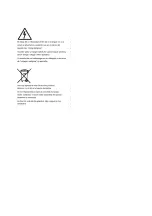
3. Position fabric to be sewn under the presser foot (F) with presser foot (F) in raised position. Make certain
seam direction is toward you, aligned with the presser foot (F) with seam location directly under the needle
(R).
4. Lower the presser foot (F) by releasing the presser foot lever (G) downward.
5. Rotate the hand wheel (K) in a clockwise direction two full turn to lock and start seam. Stop.
6. Select speed by pressing speed button (L) on face of machine. High speed, button is extended out. Low
speed, button is in, flush with machine. Use low speed for intricate work which requires a lot of stopping,
starting and turning fabric. Use high speed for long uninterrupted seams.
7. Turn power switch (A) to ON position
8. Gently guide the fabric to keep the seam straight by pressing lightly down with your fingertips on both
sides as it feeds through the presser foot (F)
9. When the seam is finished, turn switch (A) off
10. Raise the needle (R) above the fabric by turning the hand wheel (K) slightly in a clockwise direction
11. Raise presser foot (F) by lifting the presser foot lever (G)
12. Pull fabric toward you leaving about 10 inches of thread between the fabric and the machine
13. Cut thread close to fabric, leaving excess thread loosely lying on the sewing deck in the direction of the
presser foot (F) and toward you.
14. Begin the next seam in the same manner as above by following operating steps above.
TO USE THE FOOT PEDAL
(Follow previous steps 1-‐14 with these exceptions)
1. Make certain machine is in Off position
2. Plug the foot pedal jack (M) into back of the machine
3. Turn machine on by pressing the foot pedal
4. Press gently on the foot pedal to run the machine. Let up to stop. When you are finished sewing a seam,
ease your foot up and off of the foot pedal.
Note: the ON/OFF switch on the machine should be in the OFF position when using the foot pedal.
ADJUSTING TENSION
1. You should not adjust tension. Tension for maximum performance has been set and adjusted at the
factory. However, if you should find that stitches are too loose or too tight, you can adjust the stitch.
2. Loosen stitch by turning the tension screw (N) counter-‐ clockwise
3. Tighten the stitch by turning the tension screw (N) clockwise. Sewing heavier fabric may require
loosening the stitch. Very light fabric may require tightening the stitch. Bobbin tension cannot be adjusted.
CHANGING THE NEEDLE
1. Turn the hand wheel (K) clockwise to raise the needle (R) to its highest position.
2. Loosen the needle clamp screw (O) by turning it counter-‐clockwise (toward you)
You may need to use a short slotted screwdriver or small pliers.
3. Remove the needle (R), pulling down, away from the needle clamp (P)
4. Place the new needle with the flat side facing in against the needle clamp (P)
5. Push it gently as far up as it will go, and against the needle clamp (P)
6. Tighten the needle clamp screw (O) while holding the needle (R) in place.
Note: needles come in various sizes designated by numbers. They designate the left of the needle. The
smaller the number, the thinner the needle. Use smaller needles for more delicate fabrics and larger
needles for heavier fabrics.







































